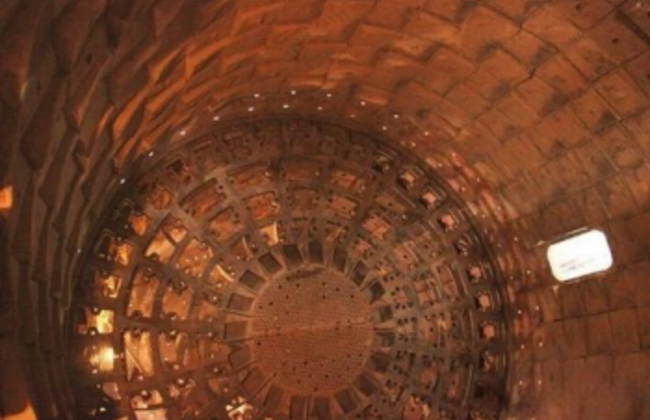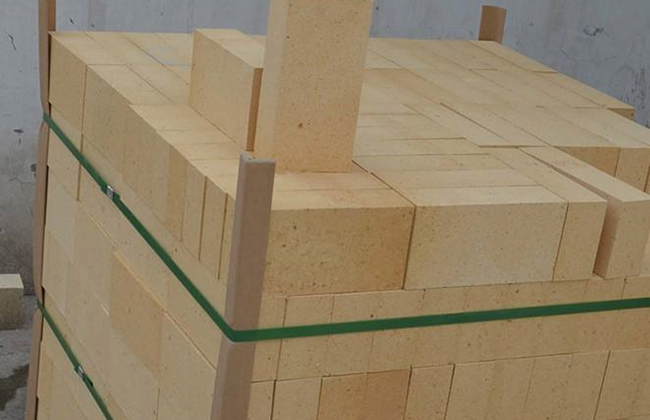The type of refractory bricks and the choice of refractory brick quality and refractory characteristics of the choice of appropriate, quality of bricklaying will affect the life of the kiln bricks. The life of the refractory bricks will directly affect the cost of maintenance of the rotary kiln, the output of high and low. This shows the importance of refractory bricks.
In the selection of kiln bricks, generally according to the temperature of each band, the load is different to choose, pay attention to the expansion coefficient of kiln bricks and kiln barrel to be closer. The greater the thickness of the kiln bricks, the better the effect of insulation and thermal insulation of the kiln shell, but the effective cross-sectional area of the kiln is also reduced, which will reduce the output of the kiln. The thinner the kiln brick, the larger the effective volume, but the more severe the heat dissipation of the kiln shell, high-temperature damage to equipment, and energy wastage are relatively large.

At present, the most used bricks in the international are two series, both ISO system (international standard) and VDZ system (German standard) the material of both is the same, only the size of the specifications are different.
ISO system’s bricks are larger and thicker, with fewer brick joints, but they are not easy to handle and operate.
VDZ system’s bricks are smaller and thinner, easy to handle, and easy to squeeze tight, but less strong and have more brick seams.
Use ISO system, as far as possible, with uniform specifications, height 220mm, width 200mm, to reduce the number of spare parts and save investment.
Refractory Bricks Can Be Divided Into The Following Categories According To Their Materials
01. Clay Bricks (Insulation Bricks)
Used in the area of preheated forging and firing belt with refractoriness below SK35.
SK: refractory index, or refractoriness. Secker cone (SK) is standard. Or for CNXXX. As an example.
SK-40: Al₂O₃≥82%, SiO₂≤10%, Fe₂O₃≤2.0%, refractoriness≥1850℃, bulk density≥2.7g/cm³.
SK-38: Al₂O₃≥70%, SiO₂≤28%, Fe₂O₃≤2.0%, refractoriness≥1850℃, bulk density≥2.45g/cm³.
SK-36: Al₂O₃≥58%, SiO₂≤38%, Fe₂O₃≤2.0%, refractoriness≥1790℃, bulk density≥2.20g/cm³.
SK-34: Al₂O₃≥42%, SiO₂≤54%, Fe₂O₃≤2.0%, refractoriness≥1750℃, bulk density≥2.00g/cm³.
SK-32: Al₂O₃≥34%, SiO₂≤62%, Fe₂O₃≤2.0%, refractoriness≥1710℃, bulk density≥1.95g/cm³.
02. High Alumina Brick
The main ingredient is Al₂O₃, the higher the content, the higher the refractoriness of the bricks, and the better the resistance to flaking, thermal conductivity, mechanical strength, and chemical erosion resistance. However, high alumina bricks have great reversible expansion and are less resistant to slag dissolution than salt-based bricks. Generally used in the forging belt (transition belt). The common refractory index is SK37, and SK37 or 36 is used in the cooling zone.
03. Alkaline Refractory Bricks
Alkaline refractory brick has high chemical resistance to ash and slag at high temperatures, has good performance of hanging kiln skin, and the kiln skin is more firmly attached than the school. Because the brick and kiln skin dissolved into one, if the kiln skin in the kiln skin fell, part of the kiln brick will also fall with the kiln skin, and resistance to flaking than high alumina brick is poor.

Alkaline Refractory Bricks Mainly Have Two Kinds Of Material Bricks
1. Dolomite brick: dolomite brick is the main component of magnesite (MgO), its composition and raw material composition is relatively close, so this brick hanging kiln skin performance is relatively good, and will not react with the material. It has high refractoriness and volumetric stability, but when the kiln skin falls off, the kiln brick may also have a part with the kiln skin falling off. Care should be taken when using it to prevent ashing. Kiln brick in the transfer of storage to pay special attention to waterproofing.
2. Magnesium chrome brick: magnesium chrome brick is the main component of chromite. It has good resistance to flaking and mechanical strength. Generally used in the rotary kiln firing belt. In the firing belt, it is subject to thermal stress, mechanical stress, and chemical erosion three conditions of damage. Therefore the kiln brick requirements of this belt are more stringent. In the past generally used chrome magnesium brick, it has the advantages of high refractoriness and good resistance to alkaline chemical erosion. But magnesium-chromium brick composition in the chromium content is relatively high, when the fire brick is abandoned, chromium metal will be lost in water, into the environment to cause pollution. At present, the amount of chromium-magnesium brick is gradually reducing, now using spinel brick to replace it.

